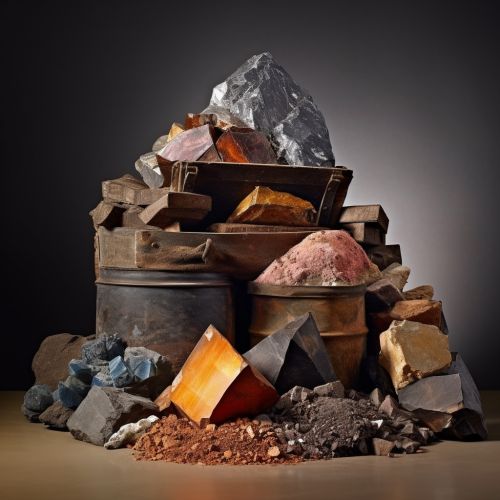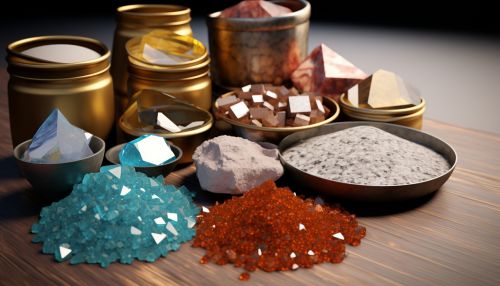Rare Earth Elements
Introduction
Rare earth elements (REEs) are a group of seventeen chemical elements in the periodic table, specifically the fifteen lanthanides, as well as scandium and yttrium. Scandium and yttrium are considered rare earth elements because they tend to occur in the same ore deposits as the lanthanides and exhibit similar chemical properties. Despite their name, rare earth elements are relatively plentiful in Earth's crust, with cerium being the 25th most abundant element at 68 parts per million (more abundant than copper). However, because of their geochemical properties, rare earth elements are typically dispersed and not often found in concentrated and economically exploitable forms. The few economically viable deposits are known as rare earth minerals.


History
The first rare earth element discovered was the black mineral "ytterbite" (renamed to gadolinite in 1800) from Ytterby in Sweden. From this mineral, yttrium, erbium, and terbium were successively isolated. In 1839 Carl Gustav Mosander, an assistant of Berzelius, separated ceria by heating the nitrate and dissolving the product in nitric acid. He called the oxide of the soluble salt "lanthana". It took him three more years to separate the lanthana further into didymia and pure lanthana. Didymia, although not further separable by Mosander's techniques, was a mixture of oxides.
Classification
The International Union of Pure and Applied Chemistry (IUPAC) includes scandium, yttrium, and the fifteen lanthanides in its definition of rare earth elements. The lanthanides are elements 57–71 (lanthanum through lutetium), while scandium and yttrium are elements 21 and 39. Yttrium is included in the rare earth elements due to its chemical similarities to the lanthanides. Although the IUPAC definition only includes the 15 lanthanides, plus scandium and yttrium, the term "rare earth elements" is often used more broadly to include thorium and the actinides.
Characteristics
Rare earth elements are chemically similar to each other and to other metals. They have distinctive properties that make them essential in many modern technologies, such as high strength magnets, phosphors, and catalysts. Most REEs are not as rare as the group's name suggests. They were named 'rare earths' because they were hard to get from ore and difficult to separate from each other.
Production and Reserves
China is the largest producer of rare earth elements, accounting for more than 90% of global production. Other countries with significant reserves include Australia, Brazil, India, Russia, and the United States. The distribution of rare earth elements in the earth's crust is uneven. They are often found in minerals with thorium and, less commonly, uranium.
Applications
Rare earth elements have many important applications in modern technology. They are used in the production of high-strength magnets, metal alloys, phosphors, catalysts, polishing powders, and other materials. They are also essential in the manufacture of electronic devices, including mobile phones, computers, and flat-screen televisions.
Environmental and Health Impacts
The extraction and processing of rare earth elements can have significant environmental and health impacts. These include the generation of radioactive waste, contamination of water resources, and exposure to toxic chemicals. Efforts are being made to develop more sustainable methods of extracting and processing these elements.
Future Outlook
The demand for rare earth elements is expected to continue to grow in the future, driven by their use in a wide range of high-tech applications. However, concerns about supply security and environmental impacts are driving efforts to find alternative sources and to develop more sustainable extraction and processing methods.
